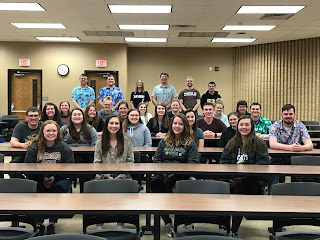 |
| Plane we rode from the Wellington airport on the North Island to the
Christchurch airport in the South Island. |
 |
Harbor view from the Te Papa Museum.
|
We were brought back from our farm
stays at 10 in the morning. Each of us were excited to hear about our
experiences, and what we got to learn about with our farm stay families. We then
started our trip to Wellington which was a two and a half hour drive. We
stopped for half an hour for a coffee and bathroom break, and then continued
onto Wellington. Along the way, we saw a major road that was under construction
and was being turned into a four lane highway. The road work had started in
2014 and is projected to be done in 2020. We also passed Kapiti Island, which
is a nature reserve and bird sanctuary of New Zealand that is home to many
diverse wildlife. To visit this island, you must have a special permit to
access the island by plane or ferry. As we entered Wellington, which is the
capital, we were able to see a glimpse of the South Island.
Wellington is home to 212,700 people and is
the second most populous city in New Zealand. Next, we went to the Te Papa Museum.
At the museum, we were able to grab a bite to eat and explore the museum. Some
of the highlights included an exhibit on the Anzacs, which was the New Zealand
and Australian military combined. It told the story of them fighting in World
War I against the Turks in Turkey. We also got to go into the earthquake
simulator that showed us what an earthquake was like, and educated us on what
safety precautions to take in the event of an earthquake. We also looked at an
example of how buildings were constructed to withstand earthquakes. Buildings
in Wellington are constructed with materials that allow the buildings to slide
and fluctuate with the quake to prevent them from collapsing.
 |
| Listening to the Beef and Lamb presentation in Wellington. |
We then went to the Beef and Lamb
organization, which charges a levy that is generated by beef, sheep, and dairy
slaughter. We met with Rob Davidson to learn about the organization. The money
is used to help improve the beef and lamb industries. The farmers get to vote
every five years on how they are doing with their funding. If the farmers feel
they are not doing a good job, then the organization would cease to exist. They
talked to us about the production of sheep, dairy, and beef industries within
New Zealand and the trends over the years. They also talked about their exports
around the world and how they compare to other countries. Another big focus
that they are pushing toward is improving the environment. There are four main
focus areas, including cleaner water, carbon neutral, thriving biodiversity,
and healthy productive soils. Their main focus within these four areas is
reducing the carbon footprint. New Zealand has the goal to reduce methane
emissions by 24-47% by 2050. This has a great impact on their industry so they have
made this as a main priority.
 |
| View of the South Island on our way to Wellington. |
After we were done with our talk, we
drove to the Wellington airport. We got to fly on a small airplane that held
about 100 people. We got to walk outside on the tarmac to get loaded onto the
plane and we entered through the back. The flight lasted for 30 to 40 minutes
and we landed in Christchurch. We then met our new bus driver Dave who
transported us to Ashburton where we will be spending the night.








Comments
Post a Comment